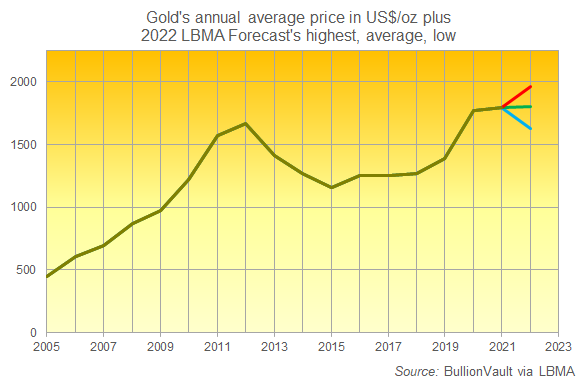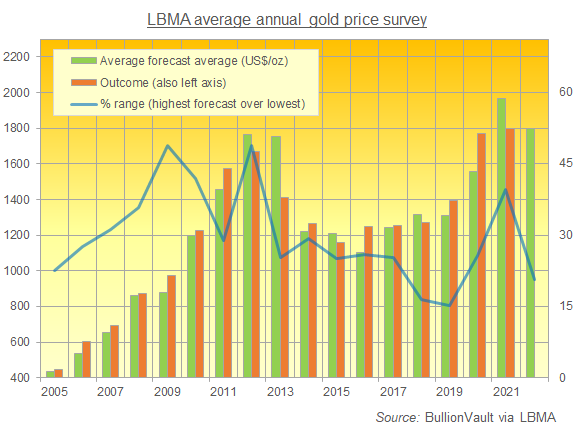LBMA Gold Price Forecast: Stuck Between the Fed and Inflation


"We asked analysts in this year's survey to identify their top three drivers for the gold price in 2022."A third of the total votes revolved around the [US] Fed's monetary policy, with projected interest rate rises cited as a negative for the [Dollar] gold price. Concerns about inflation accounted for around a quarter of the votes, with equity market performance regarded as the third key driver."
"Surprisingly, Covid-19 and geopolitical tensions were not particularly regarded as key influences for the gold price in 2022."













 Email us
Email us
